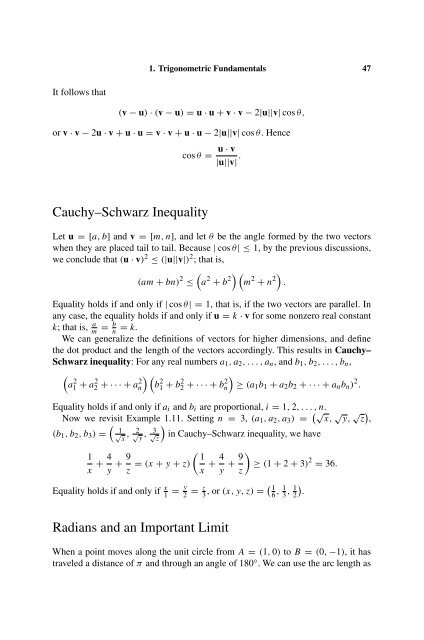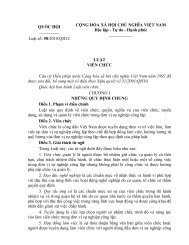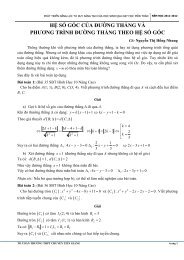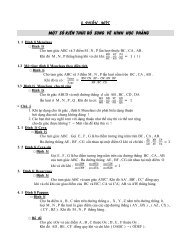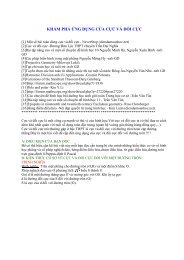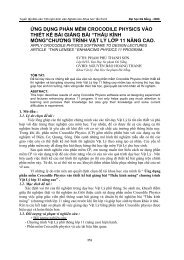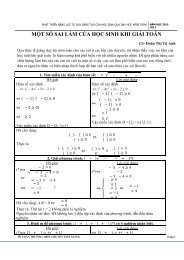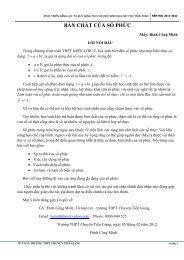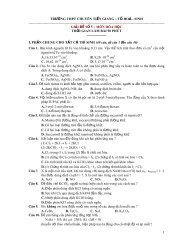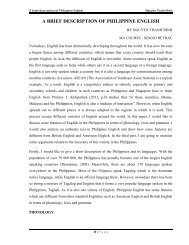103 Trigonometry Problems
103 Trigonometry Problems
103 Trigonometry Problems
Create successful ePaper yourself
Turn your PDF publications into a flip-book with our unique Google optimized e-Paper software.
1. Trigonometric Fundamentals 47<br />
It follows that<br />
(v − u) · (v − u) = u · u + v · v − 2|u||v| cos θ,<br />
or v · v − 2u · v + u · u = v · v + u · u − 2|u||v| cos θ. Hence<br />
cos θ = u · v<br />
|u||v| .<br />
Cauchy–Schwarz Inequality<br />
Let u =[a,b] and v =[m, n], and let θ be the angle formed by the two vectors<br />
when they are placed tail to tail. Because | cos θ| ≤1, by the previous discussions,<br />
we conclude that (u · v) 2 ≤ (|u||v|) 2 ; that is,<br />
(<br />
(am + bn) 2 ≤ a 2 + b 2)( m 2 + n 2) .<br />
Equality holds if and only if | cos θ| =1, that is, if the two vectors are parallel. In<br />
any case, the equality holds if and only if u = k · v for some nonzero real constant<br />
k; that is,<br />
m a = n b = k.<br />
We can generalize the definitions of vectors for higher dimensions, and define<br />
the dot product and the length of the vectors accordingly. This results in Cauchy–<br />
Schwarz inequality: For any real numbers a 1 ,a 2 ,...,a n , and b 1 ,b 2 ,...,b n ,<br />
(<br />
)(<br />
)<br />
a1 2 + a2 2 +···+a2 n b1 2 + b2 2 +···+b2 n ≥ (a 1 b 1 + a 2 b 2 +···+a n b n ) 2 .<br />
Equality holds if and only if a i and b i are proportional, i = 1, 2,...,n.<br />
Now we revisit Example 1.11. Setting n = 3, (a 1 ,a 2 ,a 3 ) = (√ x, √ y, √ z ) ( )<br />
,<br />
(b 1 ,b 2 ,b 3 ) = √x 1<br />
, √ 2<br />
y<br />
, √ 3 z<br />
in Cauchy–Schwarz inequality, we have<br />
1<br />
x + 4 y + 9 ( 1<br />
z = (x + y + z) x + 4 y + 9 )<br />
≥ (1 + 2 + 3) 2 = 36.<br />
z<br />
Equality holds if and only if x 1 = y 2 = z 3 ,or(x,y,z)= ( 1<br />
6<br />
, 1 3 , 1 2)<br />
.<br />
Radians and an Important Limit<br />
When a point moves along the unit circle from A = (1, 0) to B = (0, −1), ithas<br />
traveled a distance of π and through an angle of 180 ◦ . We can use the arc length as


